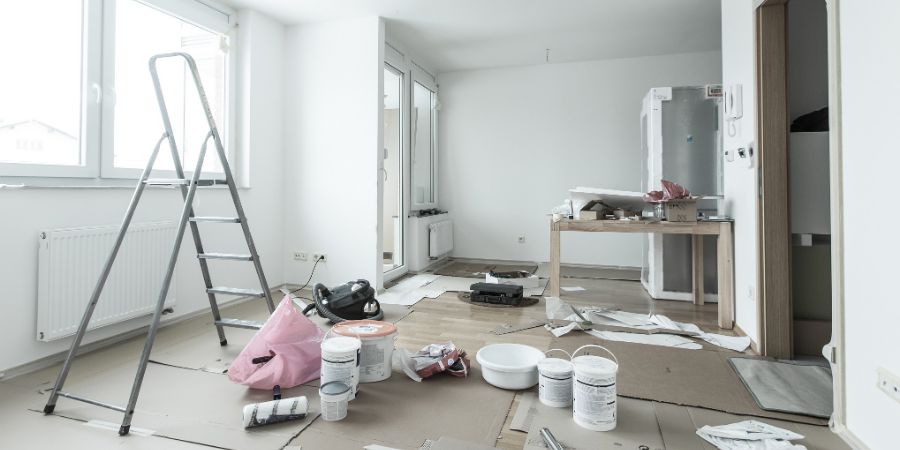Navigating the complex world of tax deductions can be daunting, especially when it comes to Home Improvement. Understanding what qualifies for deductions can lead to substantial savings. In this guide, we will delve into the intricacies of home improvement tax deductions, illuminating the processes, eligibility criteria, and potential financial benefits.
Table of Contents
Understanding Home Improvement vs. Home Repair
Before discussing tax deductions, it is essential to distinguish between home improvements and home repairs. Home improvements enhance the value of your home, extend its life, or adapt it for new uses. Examples include remodeling a kitchen, adding a deck, or upgrading plumbing systems. Conversely, home repairs maintain your property’s current condition, such as fixing a leaky roof or replacing a broken window. Recognizing this distinction is vital because it directly impacts eligibility for tax deductions.
Qualifying for Deductions: Key Considerations
Several factors determine whether a home improvement is tax-deductible. While the Internal Revenue Service (IRS) has specific guidelines, certain elements can affect eligibility.
First, whether the property is a personal residence or a rental property plays a significant role in determining tax deductibility. For a personal residence, improvements are generally not deductible. However, when you sell your home, these expenses can increase your basis, which may ultimately reduce your capital gains tax liability.
In contrast, improvements made to rental properties are often deductible. These expenses can be depreciated over time, leading to significant tax savings. This differentiation is crucial for property owners looking to maximize their tax benefits.
Second, the type of improvement itself influences whether it qualifies for deductions. Improvements that add lasting value to your home or adapt it for new use are more likely to be deductible. For example, installing energy-efficient windows, upgrading your HVAC system, or making accessibility improvements can qualify under various tax incentives. These types of improvements not only enhance the functionality of your home but also make it eligible for specific credits and deductions.
Lastly, documenting your expenses is critical for claiming deductions effectively. Keeping thorough records ensures that you have the necessary proof to substantiate your claims. Save receipts, invoices, and any related documentation that can demonstrate the work performed. This documentation may include before-and-after photos, contracts, and detailed descriptions of the work completed.
Types of Deductions and Credits
One significant area to explore in home improvement tax deductions is the capital gains tax exclusion. When selling your primary residence, homeowners can exclude up to $250,000 in capital gains if single and up to $500,000 if married filing jointly. This exclusion applies to gains from the sale of the home, which means improvements that increase your home’s basis can effectively reduce taxable gains when you sell.
Another noteworthy aspect is the Residential Energy Efficient Property Credit. This federal tax credit incentivizes homeowners to make energy-efficient upgrades to their homes. Eligible improvements can include solar panels, solar water heaters, geothermal heat pumps, and small wind turbines. Homeowners can receive a tax credit equal to a percentage of the total cost of these upgrades, significantly reducing the overall investment required.
Furthermore, the Home Accessibility Modification Tax Credit is designed to assist homeowners who make modifications to improve accessibility for individuals with disabilities. This credit allows for a deduction of certain expenses related to making homes safer and more accessible. Such improvements can include installing ramps, widening doorways, and adding grab bars in bathrooms. Not only does this improve the quality of life for those with mobility issues, but it can also lead to valuable tax savings.
Home Office Deductions and Improvements
For individuals who work from home, home office deductions can also apply to certain improvements. The IRS allows taxpayers to deduct expenses related to the portion of their home used exclusively for business purposes. This includes renovations or improvements made to that specific area, such as installing better lighting, upgrading insulation, or building storage solutions.
It is vital to calculate the portion of the home dedicated to business use accurately. The IRS provides two methods for determining this: the simplified method and the actual expense method. The simplified method offers a flat rate per square foot for the home office, while the actual expense method allows for a detailed accounting of direct expenses related to the home office area. Choosing the right method can maximize potential deductions.
Tax Benefits of Renovating for Sale
If you are considering renovating your home to increase its market value, understanding the associated tax implications is crucial. While many improvements may not be deductible in the year they are completed, they can increase your home’s basis, which may lower your taxable capital gains upon selling.
Homeowners should focus on renovations that provide a good return on investment (ROI). For example, kitchen remodels, bathroom upgrades, and curb appeal enhancements, such as landscaping or exterior paint, can significantly boost a home’s value. Keeping a detailed record of renovation costs not only helps in claiming future deductions but also prepares you for the eventual sale of your home.
Navigating State and Local Tax Incentives
In addition to federal tax benefits, many state and local governments offer incentives for home improvements, particularly those focused on energy efficiency or community enhancement. Programs may provide direct grants, rebates, or additional tax credits that can significantly offset the cost of renovations.
Homeowners should investigate their local regulations to identify available programs. Some states have enacted laws that provide tax exemptions for improvements made in specific areas or for historic preservation. Engaging with a local tax advisor familiar with state-specific laws can uncover potential savings that significantly impact your overall renovation budget home improvements.be/.
Conclusion: Maximize Your Savings through Strategic Improvements
In summary, understanding and leveraging home improvement tax deductions can lead to significant financial benefits. By recognizing the differences between improvements and repairs, knowing what qualifies for deductions, and keeping meticulous records, homeowners can maximize their tax savings. Furthermore, exploring available credits and local incentives can further enhance these benefits.





_3-6.jpg)




